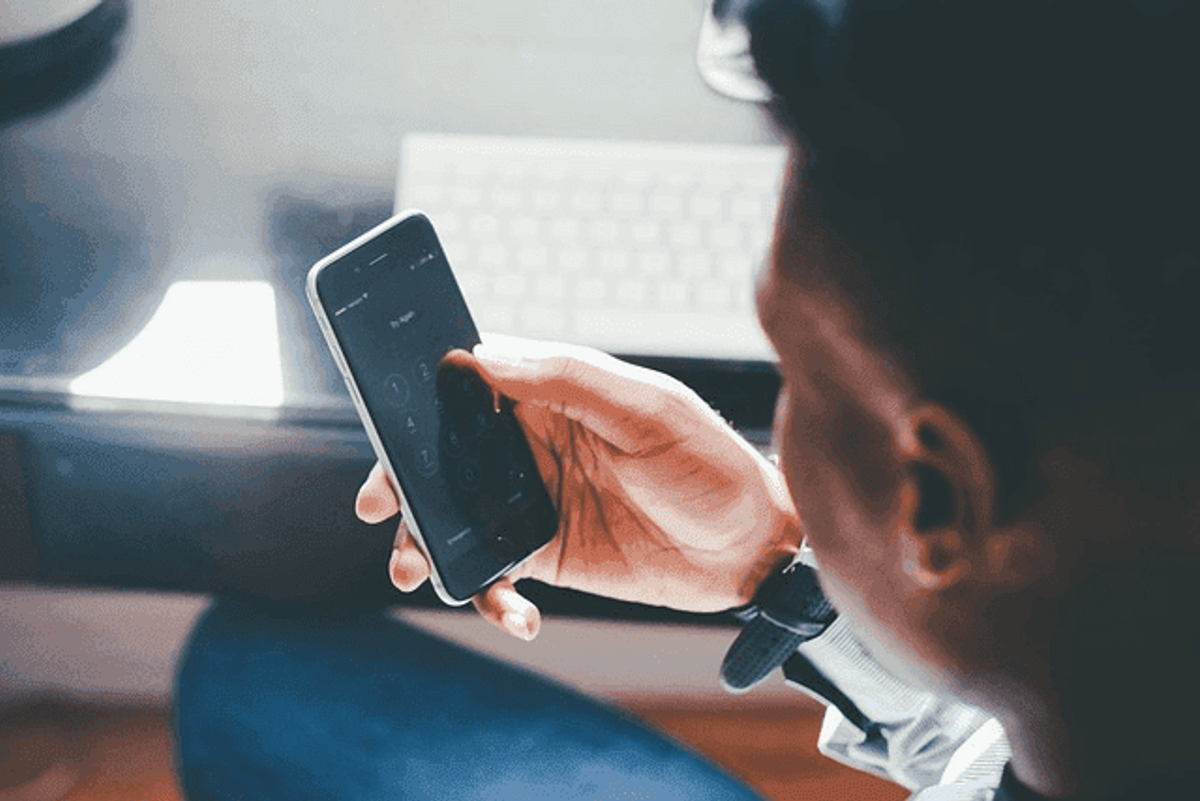What is Earned Media? The Secret Sauce for Brand Success

In digital marketing, earned media is critical for building brand success. Unlike paid advertising, which requires a financial investment for visibility, earned media organizes media coverage through positive press mentions, shares, and customer reviews.
Quick Summary
In digital marketing, earned media serves as a vital asset, offering credibility and trust through organic exposure. This type differs from paid media and owned media as it relies on customer reviews, media mentions, and social media shares rather than financial investment. Common channels for dissemination include blogs, social media platforms, and traditional media outlets. By effectively engaging audiences and building relationships with influencers, brands can harness earned media for long-t
This blog post delves into earned media, exploring its role in marketing and how it compares to other media types. We will also highlight common examples of earned media and the channels through which it is disseminated, offering insights into crafting an effective earned media strategy.
Understanding Earned Media

Definition and Concept
Earned media is a term that describes the exposure and attention a brand receives through promotional efforts that are not paid for directly. This media coverage is gained through word-of-mouth, social media shares, reviews, and other forms of organic engagement rather than paid advertising or sponsored content. It includes any content or mention of a brand that customers, influencers, or media outlets voluntarily share. This media type is crucial for building credibility and trust with potential customers, as it often involves third-party endorsements. In digital marketing, earned media is pivotal in influencing customer behavior and enhancing brand exposure.
Ready to Grow Your Business?
Get a free consultation and custom strategy tailored to your goals.
When comparing earned media to other types of media, we see distinct differences:
- Paid Media: This involves direct financial investment to gain visibility, such as paid social media ads, sponsored articles, and traditional advertising.
- Owned Media: The properties a brand controls, such as its website, blog posts, and social media accounts.
- Shared Media: This includes content shared across social media platforms where interaction and engagement occur between the brand and its audience.
Earned media stands out because it is essentially free media – the exposure and credibility come from organic mentions and interactions rather than paid promotions.
Types of Earned Media

Various forms of earned media uniquely contribute to a brand's reputation and visibility. Common examples of earned media include:
- Press Mentions: Articles or news coverage by relevant journalists and media outlets highlighting a brand's activities, products, or services.
- Positive Reviews: Customer feedback on review sites can significantly influence potential customers' purchasing decisions.
- Social Media Mentions: Organic mentions and shares by satisfied customers or influencers on social media platforms.
- User-Generated Content: Content created by customers, such as photos, videos, or testimonials, showcasing their experiences with a brand.
- Industry Conferences and Trade Shows: Participation in these events can lead to media coverage and increased visibility among industry experts and potential customers.
These earned media examples demonstrate how a brand can gain valuable exposure without direct financial investment.
Channels for Earned Media Dissemination
Earned media coverage is disseminated through various channels, each playing a crucial role in amplifying a brand's message:
- Blogs and News Sites: Articles and press releases published on third-party sites help gain earned media coverage.
- Social Media Sites: Platforms like Facebook, X, Instagram, and LinkedIn are vital for sharing and engaging with earned media content.
- Search Engines: High-quality earned media content can improve rankings, making it easier for customers to find the brand.
- Review Sites: Platforms such as Yelp and TripAdvisor host customer reviews that serve as powerful earned media.
- Traditional Media Outlets: TV and radio segments featuring a brand contribute to its earned media efforts.
By understanding where earned media can be gained and the channels through which it spreads, brands can develop comprehensive media strategies to enhance their presence. A successful earned media strategy involves:
- Actively engaging with social media channels.
- Creating engaging content.
- Building relationships with industry influencers and relevant journalists.
This approach boosts brand exposure and reinforces brand loyalty through consistent, positive, earned media.
As we explore further, it becomes clear that earned media is the gold standard in media coverage. It offers brands a way to organically influence customer behavior, gain credibility, and achieve substantial brand success without traditional advertising. Through diligent efforts and strategic planning, brands can harness the power of earned media to achieve long-term marketing success.
The Value of Earned Media

Credibility and Trust
One of the primary benefits of earned media is its ability to build credibility with audiences. Unlike paid media, which involves financial investment for exposure, earned media is gained organically through positive interactions and third-party endorsements.
When a brand receives media coverage through organic mentions, such as in a news article or social media mentions from satisfied customers, it significantly enhances its reputation. Third-party endorsements act as social proof, making customers more likely to trust and engage with the brand. This form of validation is more impactful than traditional advertising, as it comes from unbiased sources, thus increasing brand loyalty and influencing customer behavior.
Cost-Effectiveness

Earned media is also cost-effective compared to paid media. While paid social media ads and sponsored articles require a substantial financial investment, earned media is essentially free media leveraging organic reach. The long-term value and return on investment (ROI) of earned media are significant, as positive earned media generates exposure without ongoing costs.
This means that once a brand secures valuable earned media, it can benefit from continuing visibility and engagement, reducing the need for continuous paid advertising. The ability to amplify a brand's message organically makes earned media a crucial component of a cost-effective digital marketing strategy.
Brand Awareness and Reach
Earned media amplifies a brand's message and increases its visibility. Through media coverage on third-party sites, social media platforms, and traditional media outlets, brands can reach a broader audience without the expense of paid advertising.
Positive reviews, user-generated content, and social media mentions help to spread the brand message, driving increased brand awareness and reach.
This organic amplification is a crucial aspect of an effective earned media strategy. It ensures that it remains top-of-mind for potential customers and actively engages with its target audience across various social channels.
Strategies for Securing Earned Media

Creating Shareable Content
Generating earned media begins with creating engaging content that resonates with the audience and is likely to be shared. Informative, entertaining, or emotionally compelling content performs well on social media. Brands should focus on producing high-quality blogs, videos, and infographics that give value to their audience. Incorporating elements encouraging sharing, such as social media contests or user-generated content, can further boost the chances of gaining earned media coverage.
Building Relationships with Influencers and Journalists
Another essential strategy for securing earned media is building relationships with influencers and journalists. Brands should approach and engage with key media contacts who have the power to influence their target audience.
Ready to Grow Your Business?
Get a free consultation and custom strategy tailored to your goals.
This involves identifying relevant journalists and industry experts, engaging with them, and giving valuable content and insights. Nurturing long-term relationships through consistent communication and offering exclusive access to brand news can lead to ongoing media coverage and positive earned media.
Leveraging Social Media

Utilizing social media platforms effectively is crucial for gaining earned media. Brands should leverage social media accounts to gain attention and engage with their audience. Encouraging user-generated content and fostering engagement through likes, shares, and comments can help spread the brand message organically. A proactive social media manager can be pivotal in ensuring the brand remains active and responsive on social media sites. Running targeted social media contests and campaigns can drive engagement and generate earned media.
Monitoring and Responding to Mentions
To maximize the benefits of earned media, brands need to monitor and respond to media mentions effectively. Tools and techniques for tracking media mentions include social listening platforms and monitoring software.
By actively engaging with organic mentions and responding promptly, brands can capitalize on opportunities for earned media. Best practices for responding to earned media opportunities involve acknowledging positive feedback, addressing concerns, and maintaining a consistent brand presence across all media channels.
Earned media is invaluable for brands seeking to enhance their visibility, credibility, and reach. By implementing effective media strategies and leveraging various channels, brands can generate significant earned media coverage, build relationships with their audience, and achieve long-term success in the digital marketing landscape.
Measuring the Impact of Earned Media

Key Metrics
Tracking key metrics that reflect brand exposure and engagement is crucial for the success of earned media campaigns. Some important metrics include:
- Media Coverage: The quality of media coverage gained through earned media efforts. This includes the number of press mentions, articles, and features in media outlets.
- Social Media Mentions: The frequency and sentiment of mentions on social media sites. Tracking social media mentions helps understand how often and in what context your brand is being discussed.
- Engagement Rates: Interaction metrics such as likes, shares, comments, and retweets on social media platforms. High engagement indicates that the content is connecting well with the audience.
- Website Traffic: Analyzing spikes in website traffic following earned media coverage can help attribute traffic to specific earned media campaigns.
- Search Engine Rankings : Search engine rankings improve due to increased backlinks and mentions from reputable third-party sites.
- Sentiment Analysis:This involves evaluating the tone of media coverage to determine whether it is positive, negative, or neutral.
- Share of Voice: Comparing your brand's earned media mentions against competitors to assess relative visibility in the market.
By consistently monitoring these metrics, brands can gauge the effectiveness of their earned media strategy and adjust their media tactics accordingly.
Analyzing ROI

Calculating the return on investment (ROI) for earned media involves comparing the value of the media coverage gained against the financial investment in generating that coverage.
This can be challenging, but some approaches include:
- Media Value Estimation: Assigning a monetary value to earned media coverage based on what similar coverage would have cost in paid media. This includes calculating the advertising equivalency value (AVE) of press mentions and sponsored articles.
- Sales Impact: Linking spikes in sales or leads to specific earned media campaigns. This involves tracking when earned media was published and correlating it with sales data.
- Brand Loyalty and Retention: Measuring increases in customer loyalty and retention rates following positive earned media coverage.
- Cost Savings: Calculating the savings achieved by not having to spend on paid advertising to achieve similar exposure and engagement levels.
Earned media can provide significant long-term value, as positive earned media continues to influence customer behavior and brand perception over time, unlike the fleeting impact of paid media.
Conclusion

In summary, earned media is a powerful tool for achieving brand success. Its ability to build credibility, enhance brand loyalty, and provide cost-effective exposure makes it indispensable to any comprehensive digital marketing strategy. Brands should prioritize developing an earned media strategy that focuses on creating engaging content, building strong relationships with influencers and journalists, and leveraging social media platforms to maximize their reach.
Integrating earned media efforts into your overall marketing plan can yield substantial benefits, from increased brand visibility to enhanced customer trust and loyalty. By actively engaging in the earned media game and consistently measuring the impact of your media strategies, your brand can achieve sustained growth and recognition in the marketplace.
Incorporate these insights into your marketing efforts to harness earned media's full potential. As you do, you'll find that the value of earned media lies not only in the immediate gains but also in the lasting impact on your brand's reputation and success.
FAQ

- What is earned media also known as?Earned media is often called "free media" or " publicity."
What is earned media also known as?
Ready to Grow Your Business?
Get a free consultation and custom strategy tailored to your goals.
- Earned media is often called "free media" or " publicity."
- Is earned media the same as PR?While closely related, earned media refers explicitly to the coverage and exposure gained through PR efforts without paid promotions.
Is earned media the same as PR?
- While closely related, earned media refers explicitly to the coverage and exposure gained through PR efforts without paid promotions.
- What is an example of earned media?An example of earned media is a news article that positively mentions a brand without any payment or prompting from the brand itself.
What is an example of earned media?
- An example of earned media is a news article that positively mentions a brand without any payment or prompting from the brand itself.
- What is meant by the term earned media content?Earned media content includes any media exposure gained organically through promotional efforts, such as articles, reviews, and social media mentions.
What is meant by the term earned media content?
- Earned media content includes any media exposure gained organically through promotional efforts, such as articles, reviews, and social media mentions.
- What are earned media channels?Earned media channels include platforms like news websites, blogs, social media networks, and forums where third-party content about a brand can be shared.
What are earned media channels?
- Earned media channels include platforms like news websites, blogs, social media networks, and forums where third-party content about a brand can be shared.
- What is earned media vs. paid media?Earned media is publicity gained through organic means, while paid media involves purchasing advertising space or paying for content placement.
What is earned media vs. paid media?
- Earned media is publicity gained through organic means, while paid media involves purchasing advertising space or paying for content placement.
- What is earned media strategy?An earned media strategy aims to increase brand visibility and credibility through organic media coverage and third-party endorsements.
What is earned media strategy?
- An earned media strategy aims to increase brand visibility and credibility through organic media coverage and third-party endorsements.
- How do you get earned media coverage?Securing earned media coverage involves creating compelling content, building relationships with media contacts, leveraging social media, and actively engaging with audiences.
How do you get earned media coverage?
- Securing earned media coverage involves creating compelling content, building relationships with media contacts, leveraging social media, and actively engaging with audiences.
- What is the value of earned media?Earned media's value lies in building trust, enhancing brand credibility, and reaching wider audiences without direct advertising costs.
What is the value of earned media?
- Earned media's value lies in building trust, enhancing brand credibility, and reaching wider audiences without direct advertising costs.
- What is the difference between paid PR and earned PR?Paid PR involves paying for media placements, while earned PR focuses on organizing media coverage through strategic communication efforts.
What is the difference between paid PR and earned PR?
- Paid PR involves paying for media placements, while earned PR focuses on organizing media coverage through strategic communication efforts.

Written by Maria Kanic
Maria Kanic is a Social Media Manager at AMW with expertise in digital campaigns, social media strategy, and brand communications.
Ready to Grow Your Business?
Get a free consultation and custom strategy tailored to your goals.
Frequently Asked Questions
What is earned media and how does it differ from paid media?
Earned media is organic brand exposure gained through unpaid promotional efforts like customer reviews, social media mentions, and press coverage. Unlike paid media which requires direct financial investment for visibility through ads or sponsored content, earned media is essentially free and earned through positive customer experiences and third-party endorsements. This makes earned media more credible and trustworthy since it comes from unbiased sources rather than paid advertisements.
What are the most effective types of earned media for building brand credibility?
The most effective types include positive customer reviews on platforms like Yelp, organic social media mentions and shares, press coverage from journalists, user-generated content like customer photos and testimonials, and industry conference participation. These forms are particularly powerful because they represent third-party validation and social proof, making potential customers more likely to trust your brand compared to traditional advertising methods.
How can businesses create content that generates earned media coverage?
Create shareable, high-quality content that provides genuine value to your audience, such as informative blogs, engaging videos, and compelling infographics. Focus on content that is emotionally compelling, entertaining, or highly useful. Incorporate elements that encourage sharing like social media contests or campaigns that invite user-generated content. The key is producing content that naturally motivates people to talk about and share your brand organically.
Which channels are most important for earned media distribution?
Key channels include social media platforms (Facebook, Instagram, LinkedIn, Twitter), review sites (Yelp, Google Reviews, TripAdvisor), blogs and news websites, search engines, and traditional media outlets like TV and radio. Each channel serves different purposes: social media amplifies reach, review sites build trust, news sites provide credibility, and search engines increase discoverability of your earned media content.
How do you build relationships with journalists and influencers for earned media?
Start by identifying relevant journalists and influencers in your industry, then engage with their content authentically. Provide valuable insights, exclusive access to company news, and helpful resources without immediately asking for coverage. Build long-term relationships through consistent communication, offering expert commentary on industry trends, and being responsive when they need sources. Focus on being genuinely helpful rather than purely promotional.
What makes earned media more cost-effective than paid advertising?
Earned media requires no direct financial investment for exposure, unlike paid ads that demand ongoing budget allocation. Once secured, earned media continues providing value without additional costs, offering superior long-term ROI. The organic reach and credibility gained through earned media often generates sustained visibility and engagement, reducing dependency on continuous paid advertising spending while building lasting brand trust and loyalty.
How can businesses measure the success of their earned media strategy?
Track metrics like social media mentions and shares, review quantity and ratings, press coverage volume and reach, website traffic from earned sources, and brand sentiment analysis. Monitor user-generated content creation, search engine ranking improvements from earned backlinks, and conversion rates from earned media traffic. Use social listening tools to measure share of voice and compare earned media performance against competitors for comprehensive strategy evaluation.
Related Articles

A Guide to Promotional Marketing Strategies and Tips
Promotional marketing involves the strategic use of marketing channels to communicate a brand's message, aiming to increase awareness and engagement. By focusing on various techniques, such as social

What is Brand Promotion? Strategies for Building a Strong Brand Identity
Brand promotion isn't just about showcasing logos and catchy slogans; it can also be about making a unique identity. Remember, while this post offers some ideas, it’s essential to conduct your own

The Ultimate Guide to Increasing Brand Visibility in 2026
In a world where attention is a currency, making your brand visible is akin to striking gold. As we venture into 2025, brand marketing demands innovative strategies to stand out. This guide is crafted